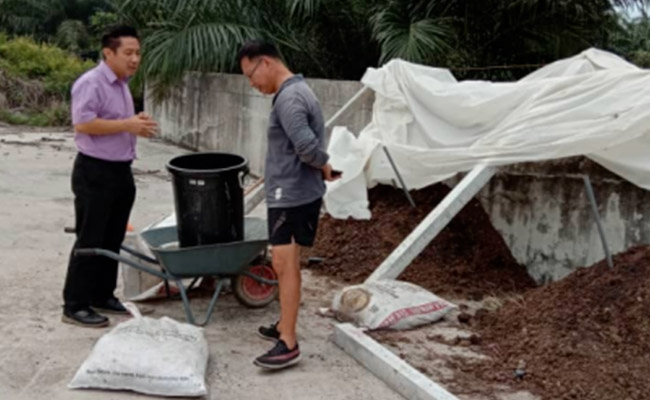kptan果园之秘 (The Secret Orchard)

我的果园是(有机无毒+环保)概念,也能保护自然生态。
环保,保护自然生态,果园小屋共电,水池灌溉系统控制,火龙果园走道灯光(sport light)全都太阳能供电,水循环,没有水电费,肥料资源管理回收,利用EM技术,大地万物都是资源!
有机农业的定义
有机农业是一种不污染环境,不破坏生态,并能提供消费者健康和安全农产品的生产方式。
有机农业是一种尽量使用天然素材,不使用或添加化学肥料,农药的耕种方式。
这种天然的耕种方式,可以保障我们吃下这些食物后,不会受到化学毒物的伤害,也能保护自然生态。
*EM菌* (Effective Microorganisms)是由大约80种微生物组成,EM菌由日本琉球大学的比嘉照夫教授1982年研究成功,于80年代投入市场。EM菌是以光合细菌、乳酸菌、酵母菌和放线菌为主的10个属80余个微生物复合而成的一种微生物菌制剂。作用机理是形成EM菌和病原微生物争夺营养的竞争,由于em菌在土壤中极易生存繁殖,所以能较快而稳定地占据土壤中的生态地位,形成有益的微生物菌的优势群落,从而控制病原微生物的繁殖和对作物的侵袭。是生态农业的发展方向,更有利于农业的可持续发展。80年代末90年代初,EM菌已被日本、泰国、巴西、美国、印度尼西亚、斯里兰卡等国广泛应用于农业、养殖、种植、环保等领域,取得了明显的经济效益和生态效益。
My orchard is (organic non-toxic + environmental friendly) concept, and can also protect the natural ecology. Environmental friendly, protection of natural ecology, orchard cabin power supply, pool irrigation system control, dragon fruit orchard walkway lights are all powered by solar energy, water circulation is free, fertilizer resource management and recycling using EM technology. Everything is a resource.
Definition of organic agriculture
Organic agriculture is a production method that does not pollute the environment, does not damage the ecology, and can provide consumers with healthy and safe agricultural products.
It is a cultivation method that uses natural materials as much as possible, without using or adding chemical fertilizers or pesticides.
This natural farming method can ensure that we will not be harmed by chemical poisons, and also protect the natural ecology.
EM (Effective Microorganisms) is composed of about 80 kinds of microorganisms. EM was successfully researched by Professor Teruo Higa of Ryukyus University in 1982 and was put on the market in the 1980s. EM is prepared of more than 80 microbial bacteria in 10 genera mainly composed of photosynthetic bacteria, lactic acid bacteria and yeasts. The mechanism of action is to form a competition between EM and pathogenic microorganisms for nutrition. Because EM is very easy to survive and reproduce in the soil, they can occupy the ecological position in the soil quickly and steadily, forming a dominant community of beneficial microbial bacteria to control Propagation of pathogenic microorganisms and attacks on crops. It is the development direction of ecological agriculture, which is more conducive to the sustainable development of agriculture. In the late 1980s and early 1990s, EM has been widely used in agriculture, aquaculture, environmental protection and other fields by Japan, Thailand, Brazil, the United States, Indonesia, Sri Lanka and other countries, and have achieved obvious economic and ecological benefits.








